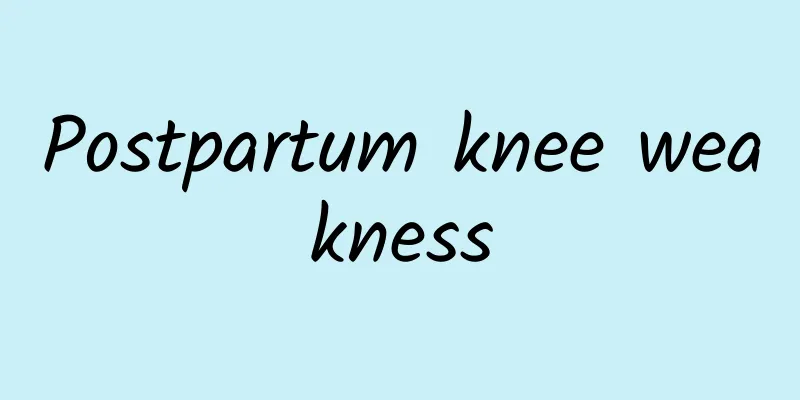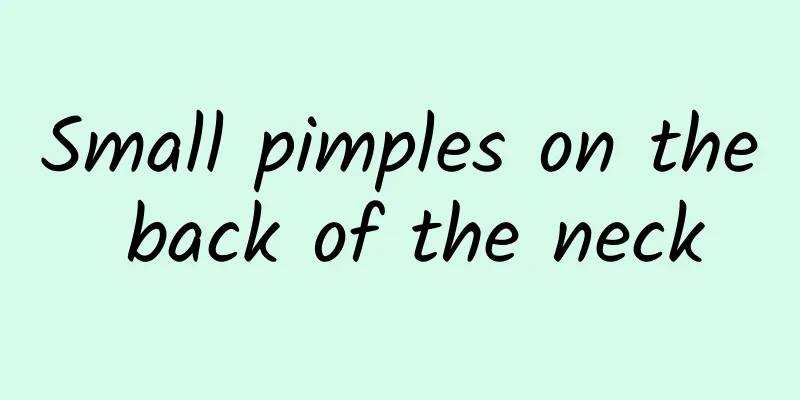What to do if your two-year-old baby has repeated high fever

|
Families with babies at home must be particularly afraid of one thing, that is, the baby having a fever and getting sick. Children have poor resistance and little ability to defend against the outside world, so they will get sick if they are not careful, especially two-week-old babies. Fever is a common childhood disease and also the most troublesome because babies often have symptoms of repeated fever. So what should we do in this case? First of all, don’t rush to reduce the fever, but find out the cause of the child’s fever. Fever is not a disease, it is like an alarm bell for the body, reminding you that something abnormal is happening inside the body. At the same time, fever is also a defense measure of our body against pathogenic microorganisms. To a certain extent, appropriate fever is beneficial to enhance the body's resistance and eliminate pathogens. So if the child does not have a high fever, do not rush to reduce the fever immediately, otherwise it will hide the real cause of the disease. There are many causes of fever in children. Upper respiratory tract infection, gastroenteritis, tonsillitis, pneumonia and all infectious diseases may cause fever symptoms. In addition, babies under one year old may also develop fever due to urinary tract infections, gastrointestinal diseases, and hand, foot and mouth disease. In many cases, a doctor must be consulted to find out the real cause of the fever. Best Practices In addition to taking medicine to reduce fever, some physical methods can also help children with fever reduce their temperature. The commonly used physical cooling methods in the home generally include alcohol bath, ice pillow cooling or warm water bath. So, which method is most suitable for the baby? Alcohol rub bath was a common method used to reduce fever in the past, but it is not recommended to use this method for babies now. Wiping the baby's body with alcohol will cause the child's skin to expand and contract rapidly, which is very irritating to the baby. It may also cause alcohol poisoning in the baby. Using an ice pillow or ice compress on the forehead to reduce fever is a common method used by many parents. However, this method is not suitable for children under six months old, because young babies are easily affected by external temperature. Using an ice pillow will cause the temperature to drop too quickly, making it difficult for the baby to adapt. In addition, when a baby has a fever, the temperature of the whole body rises. Local ice compresses can only have a local cooling effect. It is better to wipe the baby's whole body with warm water. Warm water bath means using a warm water towel at about 37°C to wipe the child's limbs, chest and back. Gradually reduce the high temperature of the skin (about 39℃) and make the baby feel more comfortable. At this time, you can also wipe your forehead and face with a slightly cooler towel (about 25°C). It should be noted that when performing these cooling treatments, if the child has so-called cold reactions such as cold hands and feet, trembling all over, purple lips, etc., stop immediately. Why? When pathogens invade the human body, the body temperature will rise to a corresponding temperature, which is the set temperature. Lowering the temperature setting is key to reducing your child's fever. Because if the set temperature does not change, the body will still produce heat to reach the target body temperature while dissipating heat. At this time, giving the child a cold bath in an attempt to reduce fever by dissipating heat is not only ineffective, but will make the child shiver and chill, which is very painful. Therefore, you must first use antipyretic drugs to lower the set temperature, and then assist with physical heat dissipation so that the body temperature can truly come down. Wear more or less? When a baby has a fever, there is often a question that makes parents hesitant: should they wear more clothes to prevent shivering, or take off clothes to help dissipate heat? In fact, adding or removing clothes should be coordinated with the progress of the fever. When the set temperature is raised and the body temperature begins to rise, the child will feel cold. At this time, a long-sleeved, breathable, thin shirt should be added, and antipyretics can be given. Half an hour after taking the medicine, the effect of the medicine begins to take effect, the set temperature is lowered, the body begins to dissipate heat, and the child will sweat and feel hot. At this time, you should reduce clothing or use warm water baths to help reduce fever. Children should not eat more eggs when they have a fever After a child has a fever, he or she usually has a poor appetite. At this time, he or she should eat liquid, nutritious, light, and easily digestible food, such as milk, lotus root powder, and vegetable soup with less oil. When the body temperature drops and appetite improves, you can change to semi-liquid food, such as minced meat and vegetable porridge, noodles, soft rice with some easily digestible dishes. In addition, drink more warm water to increase the moisture in the body's tissues, which has a stabilizing effect on body temperature and can prevent the body temperature from rising rapidly again. When a child has a fever, many parents think that they should supplement their nutrition, so they feed their children a lot of protein-rich eggs. In fact, this not only fails to lower the body temperature, but increases the heat in the body, causing the baby's body temperature to rise, which is not conducive to the child's early recovery. A few simple ways to reduce fever (1) Most babies have fevers because of catching a cold. If the baby has cold hands and feet, white tongue coating, pale face, and light urine, parents can use ginger and brown sugar water to dispel the cold. Adding two or three one-inch long pieces of green onion to the water will help the baby sweat. (2) If the baby has a fever, sore throat, yellow tongue coating, and yellow urine with a strong odor, it means that the child has severe internal heat. At this time, the child should not drink ginger and sugar water, but should drink plenty of warm boiled water. You can also add a small amount of salt to the water. |
<<: What to do if the baby's fever goes away and then comes back again
>>: Can I eat watermelon after eating peach?
Recommend
What to do with back pain? Are these four methods really effective?
More and more people are experiencing back pain i...
What is the best material for filling a tooth cavity?
If your teeth are loose or there is a hole after ...
Can I still have a baby if I have mycoplasma?
It is best not to get pregnant when you are infec...
Introduction of Chinese medicine for hair growth
If you want to grow hair effectively, some Chines...
Is nevus of Ota hereditary? Detailed explanation of the causes of Nevus of Ota
Many people don’t know much about Nevus of Ota. I...
How many days does a viral fever usually last?
Viral fever is a disease that children are very s...
How to adjust an acidic body constitution to an alkaline body constitution
Our human body is weakly alkaline under normal he...
Who is not suitable to eat lily?
We usually place lilies as ornamental plants, but...
Why is it difficult to ejaculate?
Difficulty in ejaculation means that a man's ...
Contraindications of Astragalus and Angelica Blood-Replenishing Decoction
The scorching heat of summer has gradually faded ...
Is it appropriate to wean your baby at nine months?
Because they need to go to work and cannot breast...
Does platelet count of 400 require treatment?
Anyone who has some common sense about the human ...
The best treatment for premature beats
Premature heart beats are a relatively common sym...
Fiberoptic colonoscopy
As long as the fiber colonoscopy is mentioned, I ...
What is the disease
In the daily life of firewood, rice, oil and salt...









